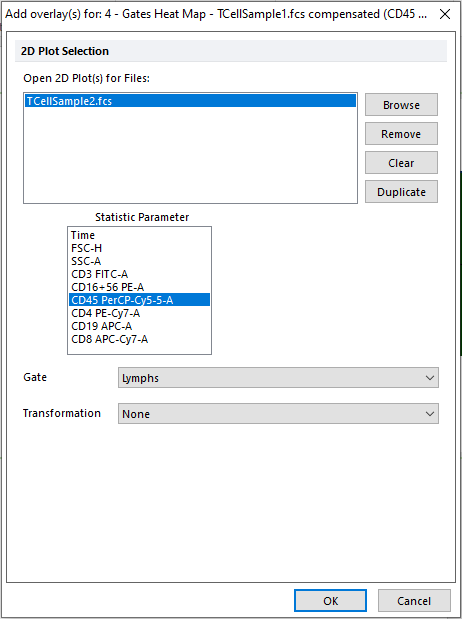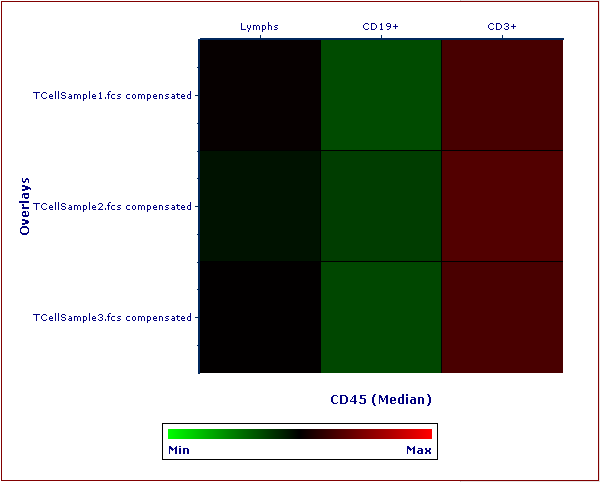Creating Gates Heat Map Overlays
FCS Express allows users to view multiple gates from a high content experiment in a single Gate Heat Map by adding each file as a new overlay. Each gate is represented by a square with each overlay presenting in rows.
There are four ways of adding overlay on a Gate Heat Map:
1.Drag-and-drop file(s) from the Data List onto the Heat Map you wish to overlay. A Select Drag and Drop Action dialog will open, asking whether to replace the existing overlay or to add the files as new overlays.
2.Drag-and-drop a plot from the layout onto the plot you wish to overlay. A Select Drag and Drop Action dialog will open, asking whether to replace the existing overlay or to add the files as new overlays.
3.Right-click on the plot and select Add overlay from the pop-up menu. This launches either the Select Data File or the Open Data File dialog depending on the Open Data Dialog user Options.
4.Right-click on the plot and select Add Overlay using Advanced Open Data Dialog (launches the Open Data File dialog).
If either Add Overlay option is used, after selecting the data file(s) to add as new overlays, the Add overlay(s) dialog will open (Figure 5.75).

Figure 5.75 The Gates Heat Map Add Overlays dialog.
The Add overlay(s) dialog allows users to choose, individually for each of the data file(s) listed in the Open 2D Plot(s) for Data Files list, the Statistic Parameter, the Gate, and the Transformation to use for the selected overlay.
The new overlay will be added to the gates heat map. The first overlay occupies the top row, while new overlays are added beneath the last row in the plot. (Figure 5.76).

Figure 5.76 Gates Heat Map with Overlays. Overlays are added to the next row in the plot.
Multiple properties can be formatted for each overlay via the Gates Heat Maps Overlays dialog. However, one Color Level will be applied globally to all overlays of a Gate Heat Map.
